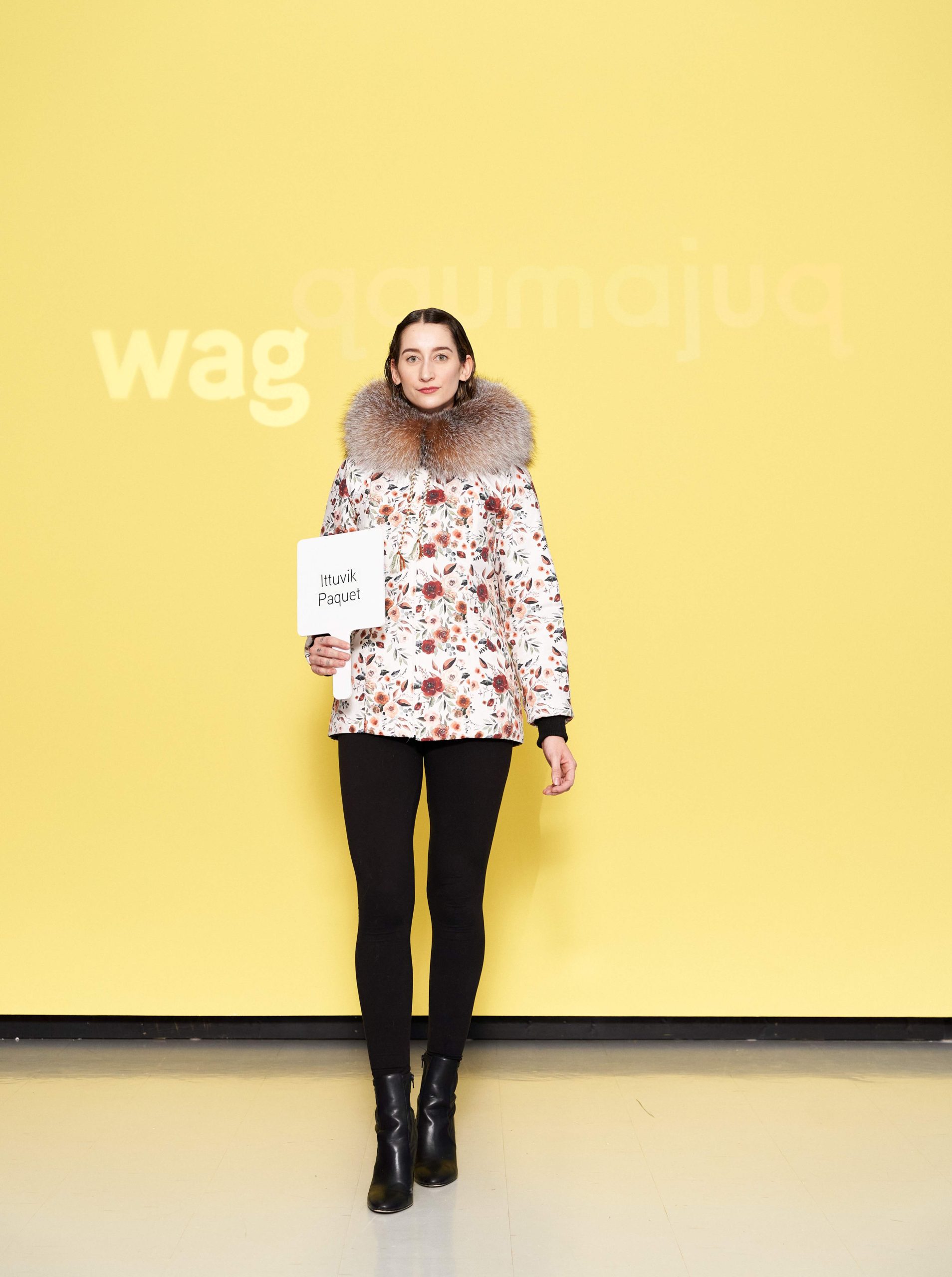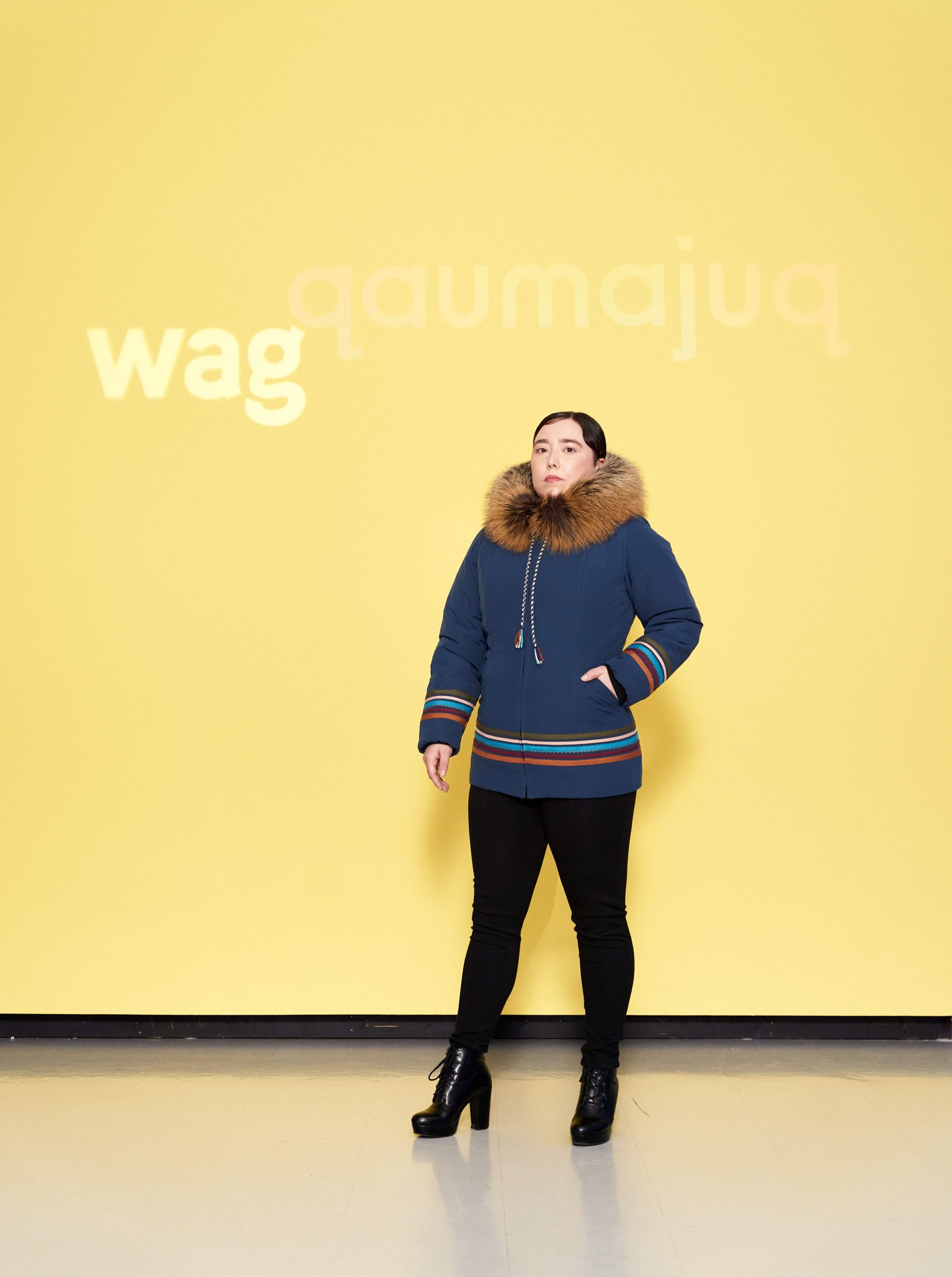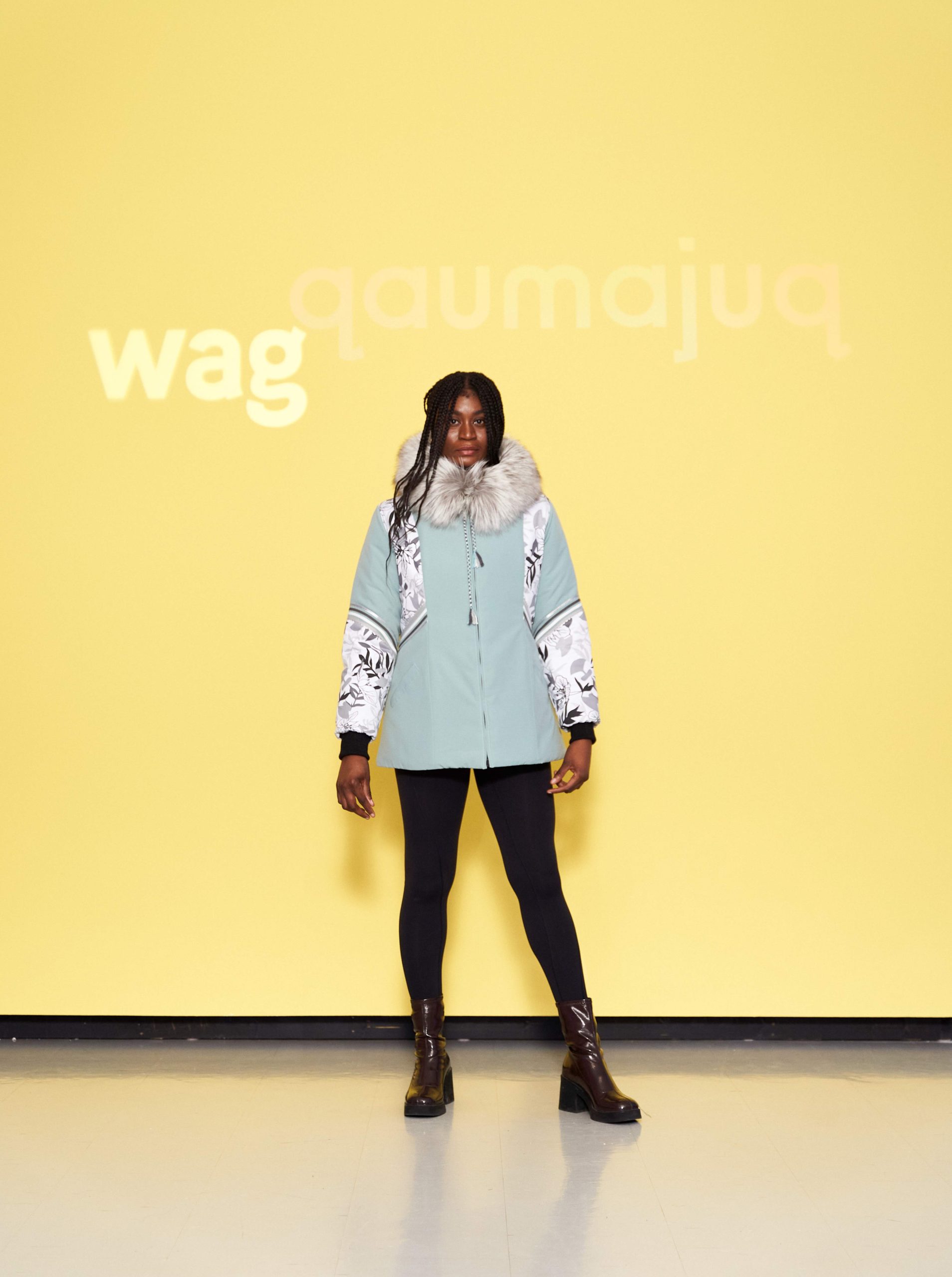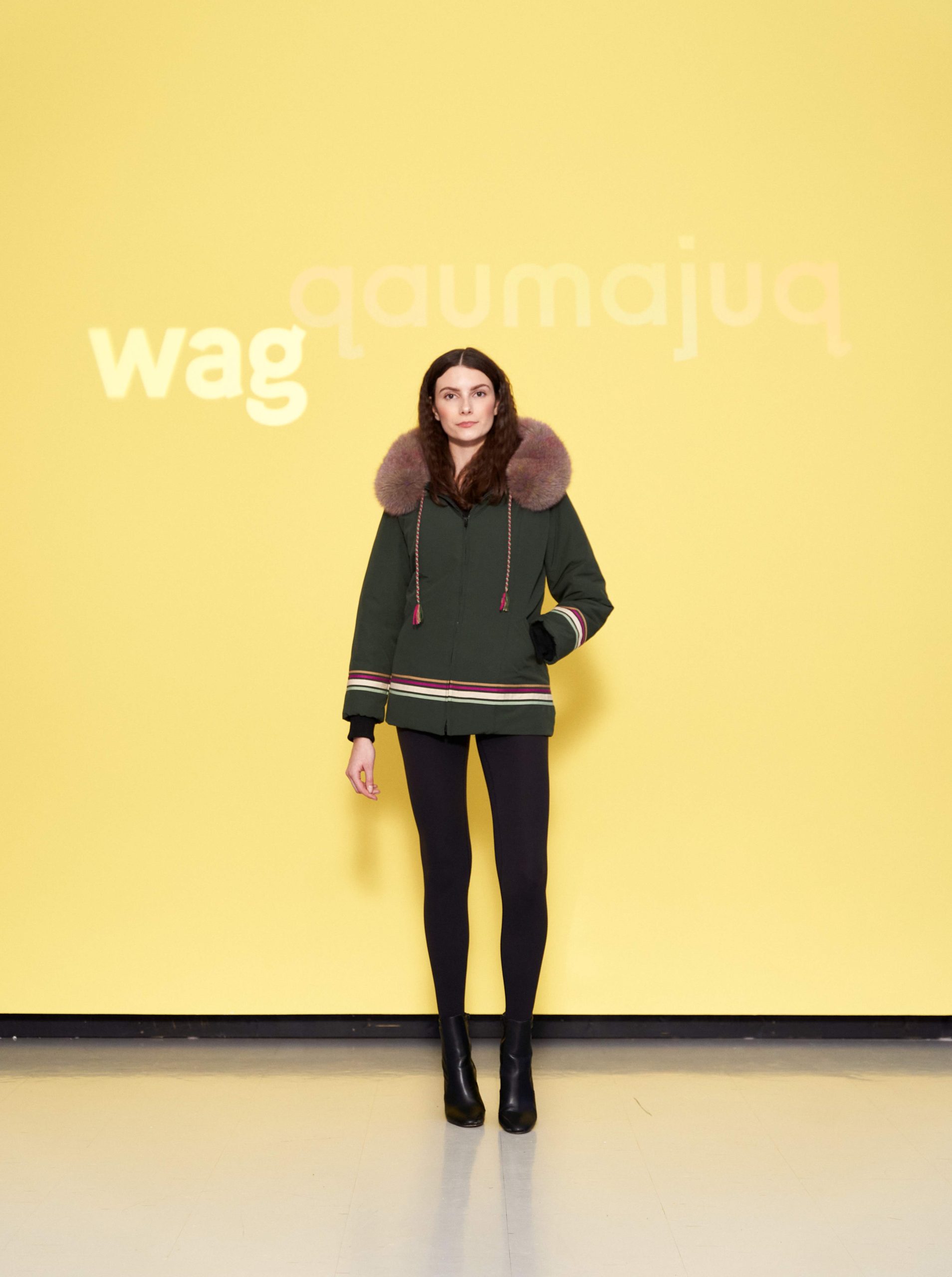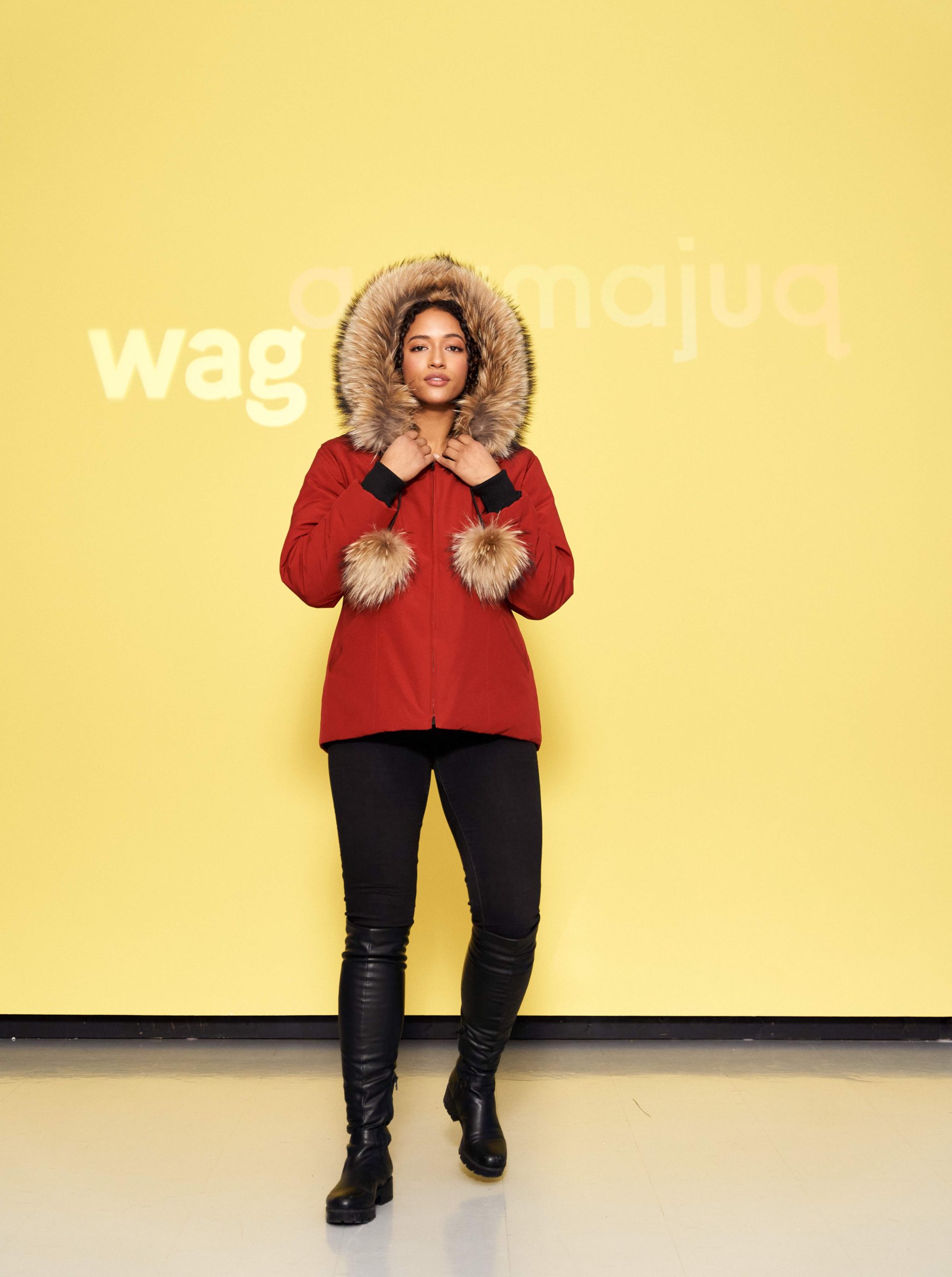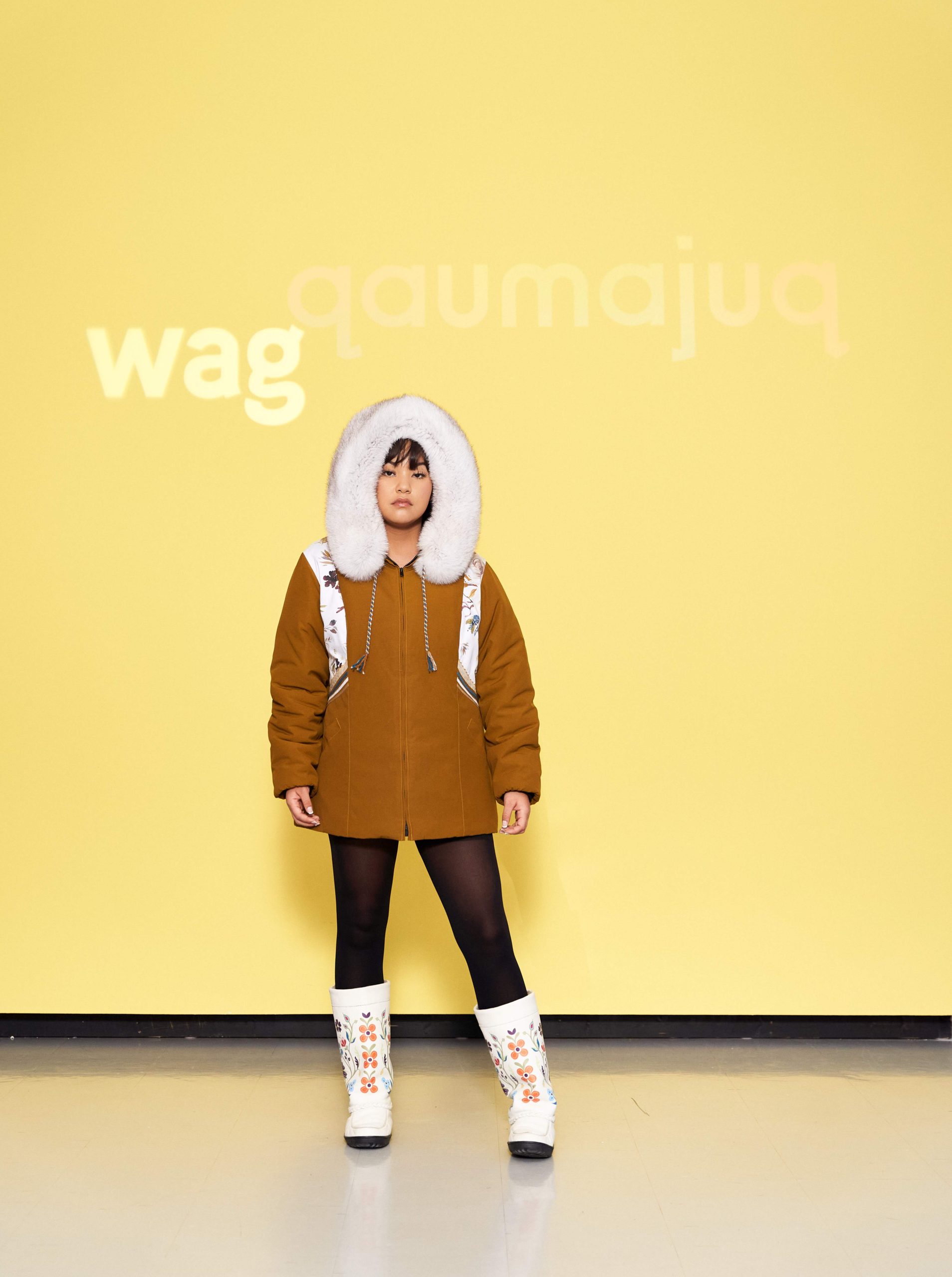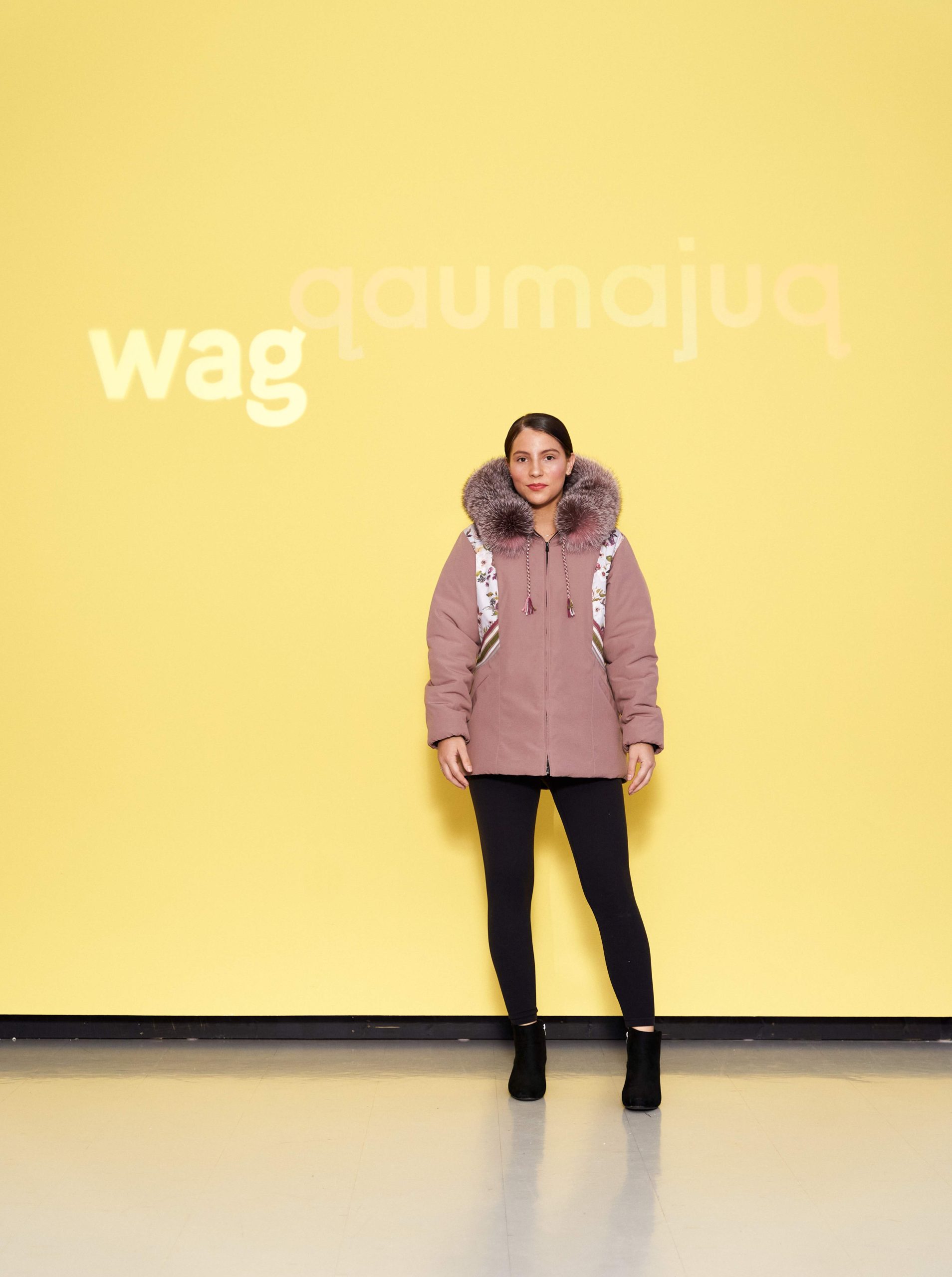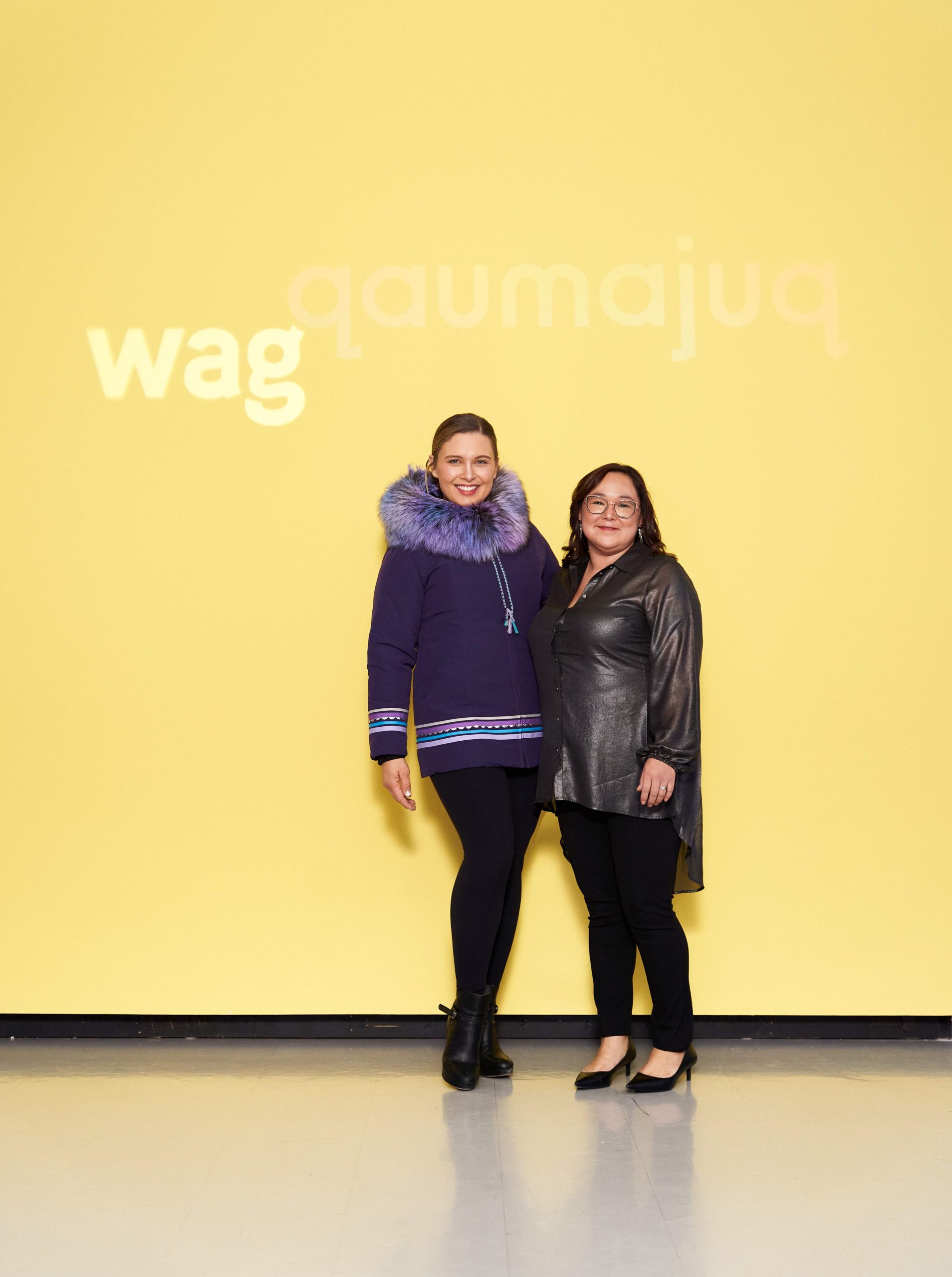ᐃᑦᑐᕕᒃ ᓴᕕᐊᕐᑦᔭᒃ ᐸᑲᐃᑦ | Ittuvik Saviardjuk Paquet
ᐃᑦᑐᕕᒃ ᓴᕕᐊᕐᔪᒃ ᐸᑭᐊᑦ ᓴᓪᓗᒥᐅᒍᓯᒪᔪᖅ ᑲᒃᑲᓛᒍᑦᓱᓂᒥᓂᑦ. ᐱᓇᓱᒐᓪᓚᕆᓕᒃ, ᐱᓇᓱᕝᕕᒥ ᑲᒪᔨᒻᒪᕆᐅᑦᓱᓂ. ᒥᕐᓱᑎᖕᖑᑐᕕᓂᐅᑎᓪᓗᒍ ᐊᕐᕌᒍᐃᑦ ᐊᒥᓲᖕᖏᑐᑦ ᐊᓂᒍᕐᓯᒪᓕᕐᑐᑦ. ᑲᒃᑲᓛᒍᑦᓱᓂ, ᐊᓈᓇᖓ ᒥᕐᓱᑎᓪᓗᒍ ᑕᑯᓐᓇᖃᑦᑕᑐᕕᓂᖅ. ᐅᓪᓗᒥ, ᐊᑎᒋᓕᐅᕈᓐᓇᓕᕐᑐᖅ ᐅᓪᓗᐃᓈᕐᓱᒍ ᐊᕐᓕᐊᓗᐊᖕᖏᑐᐊᕋᒥ. ᐊᓈᓇᒥᓄᑦ ᑫᓪᓗᑐᕐᑕᐅᕙᑦᑐᕕᓂᐅᑦᓱᓂ ᒥᕐᓱᕆᐅᖁᔭᐅᑦᓱᓂ.
ᐃᑦᑐᕕᒃ ᐃᑦᓯᒐᕈᓐᓇᓯᓐᓂᒥᔪᖅ ᓇᓴᓕᐅᕐᓱᓂ, ᐱᔪᓐᓇᓯᓚᐅᕐᑐᕕᓂᐅᑦᓱᓂ 15 ᐊᕐᕌᒍᐃᑦ ᓈᓯᒪᓕᕐᑐᑦ. ᐊᕐᕌᒍᐃᑦ 8 ᐊᓂᒍᕐᑎᓗᒋᑦ, ᒥᕐᓱᓱᓂ ᐹᓗᓕᐅᖃᑦᑕᓯᓐᓂᒥᔪᖅ, ᐊᒻᒪᓗ ᒥᕐᓱᔫᒥᒃ ᐊᑐᕆᐊᒥᒃ ᐃᓱᕐᕆᓂᕐᓴᐅᓲᒍᑦᓱᓂ. ᒥᕐᓱᓲᒍᓕᕐᓱᓂ ᐊᕐᕌᒎᒃ 2 ᐊᓂᒍᓚᐅᕐᑎᓇᒋᒃ ᐊᑎᒋᓕᐅᖃᑦᑕᓯᓐᓂᒥᔪᖅ. ᕕᕗᐊᔨᐅᑉ ᓄᖕᖑᐊᓂᑦ ᒫᑦᓯᐅᑉ ᕿᑎᖓᓄᑦ ᐊᕐᕌᒍᒥ ᑕᕝᕙᓂᑦᓭᓇᖅ, ᓯᕗᓪᓕᐹᒥ ᓄᑖᑦᓯᐊᒥᒃ ᐊᑎᒋᓕᐅᓕᕐᓂᒥᔪᖅ.
ᓯᕗᓪᓕᐹᒥ ᐊᕐᓇᓯᐅᑎᑐᐃᓐᓇᓂᒃ ᒥᕐᓱᖃᑦᑕᑐᕕᓂᖅ ᐊᒻᒪᓗ ᕿᑐᕐᖓᒥᓂᒃ ᐊᓯᖏᓐᓂᓗ ᐃᓚᒥᓂᒃ ᑭᖑᓂᐊᐱᐊᒍᑦ. ᒥᕐᓱᓲᒍᓕᑌᓐᓇᓱᓂ ᐱᒋᐅᕐᓴᑐᐃᓐᓇᖃᑦᑕᓯᒪᔪᖅ, ᐊᒻᒪᓗ ᐆᑦᑑᑎᓕᐅᕈᓐᓇᓯᑦᓱᓂ ᐱᐅᒋᓂᕐᐹᒥᓂᒃ. ᐅᕕᒃᑲᖅ ᒥᕐᓱᑎ ᑫᓪᓗᑐᕐᑕᐅᖃᑦᑕᓯᒪᔪᖅ ᓇᓪᓕᑎᒥᓄᑦ ᓂᐅᕐᕈᓯᕋᑦᓴᓕᐅᖁᔭᐅᑦᓱᓂ ᓄᑖᔭᓂᒃ ᓴᓇᒻᒪᖏᑦ ᐃᓂᕐᑕᕕᓂᕐᒥᓂᒃ. “ᓂᐅᕐᕈᑎᑦᓴᑲ ᐱᔭᐅᑦᓴᐅᑎᒋᖃᑦᑕᓚᐅᕐᓯᒪᔪᑦ” ᓚᓚᐅᕐᑐᖅ. ᐊᓈᓇᒥᓄᑦ ᐱᓗᐊᕐᑐᒥᒃ ᑫᓪᓗᑐᕐᑕᐅᖃᑦᑕᑐᕕᓂᖅ, ᖃᑕᖕᖑᑎᒥᓄᓗ ᐃᑲᔪᕐᑕᐅᕙᑦᓱᓂ, ᐊᒻᒪᓗ ᐃᓕᓐᓂᐊᑎᑕᐅᑦᓱᓂ ᐱᔪᓐᓇᓯᐊᕈᑎᑦᓴᖏᓐᓂᒃ. ᐸᓂᒻᒥᓂᒃ ᓄᑲᕐᓯᐹᒥ ᒥᕐᓱᕆᐅᕐᓴᑎᑦᓯᒋᐊᕈᒪᓕᕐᒥᔪᖅ ᐱᒋᐊᑲᐱᓛᕈᒪᓕᕐᓱᒍ ᐃᓕᓐᓂᐊᑎᓯᓗᒍ.
ᐱᒐᓱᐊᒻᒪᕆᓐᓇᑐᕆᑦᓯᓯᒪᖕᖏᑐᖅ ᐊᓈᓇᒥᓂᒃ ᑕᑯᓐᓇᓱᓂ ᐱᒐᓱᐊᒻᒪᕆᑦᑑᔮᖃᑦᑕᓯᒪᖕᖏᒪᑦ ᐊᒻᒪᓗ ᓇᓗᓇᖕᖏᑑᔮᕐᑎᓯᑦᓱᓂ. ᓚᓚᐅᔫᖅ: “ᐊᓈᓇᒐ ᙯᑎᕆᖃᑦᑕᓯᒪᒐᒥ ᖃᐅᔨᒪᓂᖏᑦᑕ ᐃᓚᖏᓐᓂᒃ, ᐅᖁᒣᑦᓴᕈᑎᖏᑦ ᐅᕿᓪᓕᑎᒻᒪᕆᑦᓯᒪᔪᑦ, ᑖᓐᓇᑑᒍᓐᓀᕋᒥ ᐃᓚᓕᒫᒥᓂᒃ ᒥᕐᓱᕈᑦᔨᒍᓐᓇᑐᑑᑦᓱᓂ ᐃᑲᔪᕐᑎᖃᓕᕐᓱᓂ”. ᐃᑦᑐᕕᒃ ᓇᓗᓕᕋᒥ ᐃᓕᓐᓂᐊᑎᑕᐅᒍᒪᓲᒍᐃᓐᓈᑐᖅ, ᐅᕝᕙᓘᓐᓃᑦ ᐱᓇᓱᐊᓗᑭᖕᖏᑕᒥᓂᒃ ᑲᒪᒋᓗᑭᓲᕆᖕᖏᑕᒥᓂᒃ ᐱᓇᓱᐊᕆᐊᖃᓕᕋᒥ, ᐆᑦᑑᑎᒋᑦᓱᒍ ᐊᒪᐅᓯᐅᕐᓱᓂ, ᐅᕝᕙᓘᓐᓃᑦ ᐊᕐᓇᓯᐅᑎᒥᒃ ᐊᑎᒋᓕᐅᓕᕋᒥ ᒪᙯᓯᐅᑎᒥᒃ. ᐱᔭᕐᓃᓘᕐᐸᑐᖅ ᑌᒫᑐᐃᓐᓈᕆᐊᖃᖕᖏᒪᑕ, ᑌᒣᒐᒥ ᐊᕐᓀᑦ ᐊᑎᒋᖏᓐᓂᕙᓪᓗᖅ ᒥᕐᓱᓲᖅ, ᐊᑎᒋᓕᐅᕆᐊᒥᒃ ᐊᓕᐊᒋᓂᕐᐹᖃᕋᒥ.
ᑌᒪ, ᐃᓕᑕᕐᓯᒍᓐᓇᓕᕐᑐᒍᑦ ᐃᒻᒥᓂᕿᒍᑎᒋᑦᓱᒋᑦ ᐱᓇᓱᐊᕐᓯᒪᔭᖏᓐᓂᒃ ᒥᕐᓱᑕᒥᑕ ᐃᓗᐊᓂ ᐅᑉᐱᐊᓗᖕᖑᐊᓕᐅᕐᓯᒪᓲᒍᓕᕐᒪᑦ. “ᐊᓕᐊᒋᒻᒪᕆᑦᑕᕋ, ᑌᒪᖕᖓᑐᐃᓐᓇᖅ ᐱᓇᓱᐊᕋᓗᐊᕈᒃᑯ ᖃᓄᐃᒋᖕᖏᑕᕋ! ᑕᖃᓐᓇᓲᒍᒐᓗᐊᖅ ᑐᓄᒃᑯᑦ ᐊᒻᒪᓗ ᑐᐃᒃᑯᑦ, ᑭᓯᐊᓂ ᐊᓕᐊᒋᔭᕋ ᐱᓇᓱᐊᕆᐊᒥᒃ!”, ᐃᑦᑐᕕᒃ ᓚᓚᐅᕐᑐᖅ. ᐊᓕᐊᒋᓂᕐᐹᓕᒃ ᑕᐅᑦᑐᒋᓂᐊᕐᑕᖓᓂᒃ ᓇᓪᓕᑳᕆᐊᒥᒃ, ᐊᒻᒪᓗ ᖃᓄᐃᑦᑐᐃᑦ ᑲᑎᒪᑦᓱᑎᒃ ᐱᐅᔫᒻᒪᖔᑕ. ᐃᓱᒪᒋᔭᑐᐊᖃᓕᕋᒥ, ᐊᔪᐃᓐᓇᓯᓲᖅ ᐱᒋᐊᕐᑕᒥᓂᒃ ᐱᔭᕇᒋᐊᓚᖓᑦᓱᓂ, ᑭᓯᐊᓂ ᐱᕕᑦᓴᖃᓕᕋᒥᐅᒻᒥᔪᖅ. ᐱᓇᓱᐊᕈᓯᐅᑉ ᓄᖕᖑᐊᓂ, ᐊᑕᐅᓯᓕᐅᕈᓐᓇᑐᖅ ᐅᓪᓗᓭᓐᓇᖅ. ᐱᔭᕇᑲᐱᓐᓂᐸᐅᓯᒪᔪᖅ ᐅᑭᐅᒥ ᐅᓕᑲᑦᑕᓕᐅᕐᓱᓂ ᐅᓐᓄᐊᑐᐃᓐᓇᖅ ᐱᔭᕇᕐᓱᒍ ᐸᓂᐊᐱᒥᓂᒃ ᒥᕐᓱᕈᑦᔨᓱᓂ.
ᐱᒋᐊᖕᖓᓱᓂ, ᐃᑦᑐᕕᒃ ᐱᔪᓐᓇᑐᕆᓯᒪᖕᖏᑐᖅ, ᑭᓯᐊᓂ ᐅᓪᓗᒥ ᓇᒻᒥᓂᕐᒥᓂᒃ ᓂᐅᕕᐊᑦᓴᖃᓲᒍᓕᕐᑐᖅ. ᐃᓚᒋᔭᐅᓯᒪᔪᖅ ᖃᒻᒥᖅ ᑕᑯᑦᓴᐅᑎᑦᓯᔪᓄᑦ ᑕᑯᒥᓇᕐᑐᓕᐅᕐᑎᓄᑦ ᓴᓇᔭᕕᓂᕐᒥᓂᒃ ᐊᒻᒪᓗ ᐊᓐᓄᕌᓂᒃ ᕿᒥᕐᕈᑎᑦᓯᓂᖃᕐᑎᓗᒍ ᖃᐅᒪᓂᕐᒥᒃ ᕗᐃᓂᐯᒃᒥ. “ᐱᒍᓐᓇᑐᕆᓯᒪᖕᖏᑐᖓ, ᑭᓯᐊᓂ ᒍᓐᓇᕆᐊᒥᒃ ᖃᐅᔨᓯᒪᔪᖓ” ᒥᕐᓱᑎᒃ ᓚᓚᐅᕐᑐᖅ.
Ittuvik Saviadjuk Paquet vit à Salluit depuis son plus jeune âge. Elle travaille comme principalement comme directrice de centre à l’école du village. Elle est devenue couturière il y a quelques années. Enfant, elle avait l’habitude de voir sa mère coudre de temps en temps. Aujourd’hui, elle est capable de faire une parka en une journée si elle n’est pas trop occupée. Elle a été beaucoup poussée par sa mère, mais aussi par sa cousine et sa meilleure amie.
Ittuvik a commencé par crocheter des nasait (chapeaux), il y a environ 15 ans. 8 Huit ans plus tard, elle a commencé à coudre des mitaines et s’est sentie plus à l’aise avec la machine à coudre. Ce n’est qu’après deux ans de couture qu’elle a commencé à confectionner des parkas.De fin février à mi-mars cette année- là, de la fin du mois de février au milieu du mois de mars, elle a confectionné son premier parka tout neuf.
Au début, elle ne cousait que pour les femmes, puis, peu après, pour ses enfants et d’autres membres de sa famille. Au début, c’était surtout pour s’entraîner et trouver les patrons qui lui convenaient le mieux. La jeune couturière a été encouragée par ses proches à commencer à vendre sa propre ligne de vêtements. “Cela s’est fait assez rapidement”, dit-elle. Sa mère l’encourageait particulièrement, ses cousines l’ont également aidée tout au long du cheminen cours de route et lui ont montré comment s’améliorer. Elle prévoit d’apprendre bientôt à sa fille cadette à coudre elle aussi.
Elle ne s’attendait pas à autant de travail, car sa mère lui donnait l’impression que c’était plus facile et sans effort que ce l’est en réalité. Elle raconte : « lorsque ma mère m’a transmis des éléments de son savoir, c’est comme si ça lui avait enlevé un énorme poids, car elle n’était plus la seule à coudre pour toute sa famille. » Ittuvik continue cependant à demander conseil lorsqu’elle n’est pas sûre d’elle ou lorsqu’elle doit réaliser une pièce qu’elle ne fait pas souvent, comme un amauti ou un parka de chasse pour femme. Elle a du mal à les réaliser, alors elle fait plus de parka de femme, ce qu’elle préfère. Sa cousine et sa meilleure amie l’ont beaucoup aidée à coudre les fermetures éclaires et les poches.
Aujourd’hui, on reconnaît son travail artisanal au petit hibou qu’elle coud à l’intérieur des tissus. “J’adore ça, je pourrais le faire tout le temps! Cela peut être fatigant pour mon dos et mes épaules, mais cela me rend heureuse”, dit Ittuvik. Ce qu’elle préfère dans le processus, c’est choisir la couleur et ce qui va ensemble. Lorsqu’elle s’y met, elle fait de son mieux pour terminer ce qu’elle a commencé, mais seulement si les circonstances le permettent. Un week-end, elle peut en faire un parka en une journée. Le manteau d’hiver qu’elle a confectionné le plus rapidement a été réalisé en une nuit pour sa cadette.
Au début, Ittuvik a douté d’elle-même, mais aujourd’hui, elle tient sa propre ligne de vêtements. Elle a récemment été l’une des artistes exposantes au CRAFTED Event and Fashion Sshow à Qaumajuq, à Winnipeg. “Je ne pensais pas pouvoir le faire, mais je le peux”, dit la couturière.
Ittuvik Saviarjuk Paquet lives in Salluit since her young age. As a main position of employment, she is working as a Center Director at the local school. She became a seamstress a few years ago. As a child, she was used to seeing her mother sew ing once in a while every so often. Today, she is able to make a parka in a day if she’s not too busy. She was pushed a lot by her mother, a lot but also by her cousin and her best friend.
Ittuvik started with crocheting nasait (hats), about 15 fifteen years ago. 8 Eight years later, she started sewing mittens, and found better comfort with the sewing machine. It was not only after two years into sewing that she started making parka’s. The same year, from end of February to mid-March of the same year, she made her first brand new parka.
At the beginning she would sewed only for women at the beginning and would make some clothing for her children and other family members shortly after. It was mainly for her own own practicetraining in the beginning, and to find the patterns that suit her the best. The young seamstress was encouraged by her loved ones to start selling her own line of fashion. “It went pretty fast” she says. Her mother was especially encouraging her, her cousins helped her along the way as well, and showed her to better herself. She is planning to show her youngest daughter how to sew soon , as well.
She didn’t anticipate so much work as her mom made it look so effortless and easy. She said: “When my mother gave me pieces of her knowledge, it had taken a lot of weight off of her, as she wasn’t the only one sewing for her entire family anymore”. Although Ittuvik still asks for advice when she’s unsure of herself, or when she has to make a piece she doesn’t do often, like an amauti, or a women’s hunting parka. She has a hard time with them, so she makes more of women’s parkas, her personal preference. Her cousin and her best friend also helped her a lot with the zips and pockets.
Now, we recognize her homemade work by the little owl she sews inside of the fabrics. “I love it, I could do it all the time! It can get tiring for my back and shoulders, but it makes me happy!”, Ittuvik says. Her favorite part of the process is choosing the color, and which goes together. When she puts her mind into it, she does her best to finish what she started, but only if the circumstances allow it. In a weekend, she can make one parka in a day. The fastest she’s done a winter coat was overnight for her little daughter.
In the beginning, Ittuvik doubted herself, but today she holds her own line of clothing. She was recently one of the exhibiting artists at CRAFTED Event and Fashion Show at Qaumajuq in Winnipeg. “I didn’t think I could, but I can” the seamstress says.
ᖃᐅᔨᒋᐊᑦᓯᐊᕈᒪᒍᕕᑦ ᓴᓇᖕᖑᐊᑎᐅᑉ ᒥᑦᓵᓄᑦ / Découvrir plus sur l’artiste / Know more about the artist:
Facebook Page
Instagram
ᐊᓪᓚᑐᖅ | Texte de | Text by: Jessie Fortier Ningiuruvik
ᐊᑦᔨᓕᐊᕕᓂᕐᒥᓂᒃ ᐊᑐᕐᑕᐅᑎᑦᓯᓯᒪᔪᑦ / Crédit photos / Photo Credit: WAG-Qaumajuq, Danny Shumov
